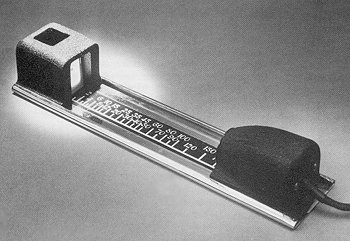|
Beginnings
The company started in a very humble way from Kenneth (now
Sir Kenneth) Corfield's house in Lonsdale Road. Sir Kenneth had been
interested in photography since the age of ten when he acquired a Kodak
box Brownie camera. Photography became his hobby, but a schoolboy's
pocket money didn't go very far, so he built his own enlarger, mixed his
own processing chemicals and used out of date government surplus
photographic paper. He was a pupil at Elmore Green High School in
Bloxwich and even at that early age had developed a high level of
initiative. He grew up in Walsall and so it was a natural step to join
Walsall Photographic Society. He used to enter his prints in their
competitions and at the age of 16 he won first prize for a photograph of
roses covered in dew.
|

Where it all began. Sir Kenneth's old house in Lonsdale Road. |
When Sir Kenneth left school he decided to go into
engineering. He was inspired by his grandfather, who built up a
successful business as an iron-founder. At the age of sixteen and a
half he joined Fischer Bearings, initially as an apprentice, and
later as a management trainee. Whilst there he obtained a diploma in
Mechanical Engineering at Wolverhampton and Staffordshire College of
Technology, which gave him a good knowledge of mechanical and
electrical engineering. By now the family had moved to
Wolverhampton, and in 1947 Sir Kenneth read an article in 'Miniature
Camera Magazine', which described the construction of an accurate
enlarger exposure meter. It compared light from a spot-source on a
negative with light from a reference source, in this case a torch. |
He built an experimental version which worked extremely
well, and demonstrated it during a lecture he was giving on developing
and enlarging to Walsall Photographic Society. The people in the
audience were extremely enthusiastic about the meter, which was not only
accurate but could greatly reduce wastage of expensive photographic
paper and chemicals. One member of the audience, who was connected with
the photographic trade, even asked if he could buy one; but the answer
of course was 'no'. Word did quickly get round and Sir Kenneth was
approached by a gentleman from a company who wanted to manufacture it .
While considering the offer, Sir Kenneth realised that if the company
could make money from manufacturing it, so could he.
The next step was to completely redesign the crude
prototype into a high quality product that could easily be manufactured
and sold at a reasonable price. It took about six months to complete the
new design, and by early 1948 he was ready to produce the final version.
Using his contacts in the engineering trade Sir Kenneth got a small
number of parts made, and twelve units were assembled with the able
assistance of his younger brother John.
Like Sir Kenneth, John grew up in Walsall and went to
Elmore Green High School. When the family moved to Wolverhampton, he
finished his schooling at Wolverhampton Art College, and so was the
'artist' of the family. After school he became an engineer at Villiers
and acquired the engineering skills that would become so important to
the family business.
The assembled units were sent as free samples to the
leading photographic retailers of the day in the hope that orders would
follow. After a lot of consideration it was decided to call the device
'The Corfield Lumimeter'. Soon talks were underway with R. G. Lewis, one
of the country's leading photographic dealers, which led to an order for
250 units. They first went on sale in 1948 at a retail price of £4.10s.
John's artistic skills were put to good use as he produced all of the
artwork associated with the product, including the various scales which
were hand-drawn in black ink and then photographed by Sir Kenneth. The
photographed scales were stuck on to the Lumimeter and varnished.
|
 The Lumimeter.
The Lumimeter. |
In use the light from a small part of a negative is
projected onto a vertical screen in the reflex head at the
top. Initially the lamp is turned off and the Lumimeter is
positioned so that a dark part of the negative is displayed on the
screen. A dial on the lamphouse is set to the correct paper speed
and the lamp is turned on. In the centre of the screen is a luminous
spot. |
The lamphouse is now moved to and fro until the spot just
disappears. The exposure time can then be read from the scale on the
baseplate.
They were now faced with the difficulties of manufacturing
the Lumimeters. The attic in Lonsdale Road was hastily converted into an
assembly area and the coal shed became the press shop. A press had to be
purchased as it was essential for producing the rounded edges on the
baseplate. As Sir Kenneth and John were in full time employment, every
minute of their spare time was now occupied in the assembly work.
 |
|

|
Back |
|
Continue |
|
|

















